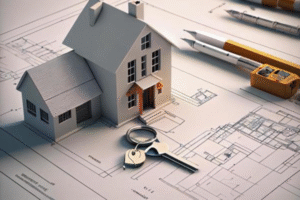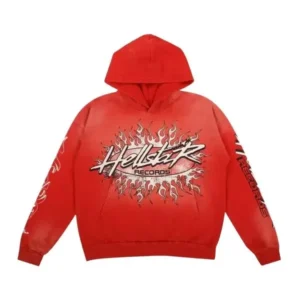
Calligraphy artist
The United Arab Emirates (UAE) is renowned not only for its modern skyline and luxury but also for its deep-rooted traditions and vibrant culture. Among the many aspects of its cultural identity, the traditional art of UAE and the mesmerizing elegance of UAE calligraphy stand out as profound expressions of national heritage.
Art in the UAE is a bridge between the past and the present—a way to preserve history, tell stories, and express spirituality. Whether carved into walls, painted onto ceramics, or inscribed on paper, these traditional forms continue to inspire, educate, and connect generations of Emiratis and art enthusiasts worldwide.
History of Traditional Art in the UAE
Pre-Islamic Art and Early Expressions
Long before the formation of the modern UAE, the region was home to various tribal communities who left behind intricate patterns, carvings, and decorative symbols. Early artifacts reveal geometric designs on pottery, palm frond weavings, and camel saddlery—each representing daily life and spiritual beliefs.
Islamic Influence on Traditional Art
With the advent of Islam, art in the UAE evolved to reflect religious principles. Figurative art gave way to geometric patterns and calligraphy, emphasizing the beauty of divine words. This shift laid the foundation for UAE calligraphy, one of the most significant elements of Islamic and Emirati artistic heritage.
Key Elements of Traditional Art of UAE
The traditional art of UAE includes a broad range of forms, styles, and materials. Below are some of the most important traditional art forms practiced in the region:
1. Al Sadu Weaving
Al Sadu is a traditional Bedouin weaving technique practiced by Emirati women using wool from sheep, camels, and goats. Patterns typically include diamonds, zigzags, and triangles, representing natural elements like stars and desert dunes.
2. Pottery and Ceramics
Historically, pottery in the UAE was used for storing water, food, and incense. Traditional pots are often hand-crafted and adorned with minimal designs, reflecting both utility and aesthetic values.
3. Henna Art
Henna, a plant-based dye, is used to create intricate patterns on the hands and feet during celebrations. The practice is deeply rooted in Emirati culture and continues to be a favorite among women during weddings and festivals.
4. Palm Frond Weaving (Khoos)
Khoos involves weaving palm fronds into baskets, mats, and fans. This eco-friendly art symbolizes sustainability and resourcefulness and is still practiced in rural communities.
5. Metal and Wood Carving
From sword hilts to doors and chests, intricate carvings on metal and wood reflect a mix of functionality and ornamentation. These carvings often feature geometric motifs and Arabic calligraphy.
Exploring UAE Calligraphy – The Soul of Islamic Art
Among all traditional art forms, UAE calligraphy holds a special place in the heart of Emirati culture. More than just decorative writing, Arabic calligraphy is a revered form of spiritual and intellectual expression.
The Origins of Calligraphy in UAE
Arabic calligraphy has its origins in the early Islamic world and flourished as a sacred art form across the Middle East, including the UAE. It was primarily used to write verses from the Qur’an, and its development was guided by a desire to honor and beautify holy texts.
Types of Arabic Calligraphy in UAE
Various scripts have evolved over centuries, and many are used in UAE calligraphy:
-
Kufic: The oldest script, known for its angular shapes and strong lines.
-
Naskh: A clear and readable style, commonly used in print.
-
Thuluth: Known for its large letters and decorative curves.
-
Diwani: A highly ornate script developed during the Ottoman period.
-
Ruq’ah: A simple, modern script used in everyday handwriting.
Calligraphy as a Modern Art Form
In today’s UAE, calligraphy is not limited to religious texts or traditional scrolls. Contemporary Emirati artists use UAE calligraphy in abstract art, digital media, and architectural design—blending ancient script styles with modern aesthetics.
Symbolism and Meaning in Emirati Traditional Art
The traditional art of UAE is rich with symbolism that connects the viewer to history, nature, and spirituality.
-
Geometric Patterns: Represent the infinite nature of creation, commonly used in Islamic architecture and textiles.
-
Arabesque Designs: Flowing floral motifs that symbolize the interconnectedness of life.
-
Calligraphy: Often incorporates verses from the Qur’an or poetic lines, emphasizing the power of language.
These artistic expressions offer not just beauty but also cultural depth and philosophical insight.
Materials Used in Traditional Emirati Art
1. Natural Fibers and Dyes
Artists traditionally used materials found in the desert environment—wool, palm fronds, and natural dyes from plants and minerals. Sustainability and local sourcing were integral to artistic practice.
2. Clay and Ceramics
Used in pottery and sculpture, clay remains a foundational medium in traditional art. Handmade methods preserve authenticity and cultural significance.
3. Ink and Parchment
Calligraphers rely on handmade ink and natural parchment or high-quality paper to maintain the integrity of the script.
Role of Traditional Art in Celebrations and Rituals
Emirati traditional art plays an essential role in social and religious ceremonies. From weddings and national holidays to Ramadan and Eid, artistic expressions are embedded in every celebration.
-
Henna designs during weddings symbolize blessings.
-
Calligraphy is often used to write invitations and decorations.
-
Decorative tents and textiles at festivals showcase weaving and embroidery.
Education and Transmission of Artistic Heritage
Preserving the traditional art of UAE requires intentional education and cultural initiatives. Many families pass down skills from generation to generation, while schools and cultural centers teach younger generations about the value of traditional crafts and calligraphy.
Programs are in place across the UAE to teach:
-
Al Sadu weaving
-
Arabic calligraphy
-
Pottery making
-
Palm frond weaving
These initiatives are essential for keeping traditional arts alive in the age of modernization.
Contemporary Revival of Traditional Art in UAE
Modern Emirati artists are bringing new life to old traditions. They incorporate the traditional art of UAE into contemporary painting, sculpture, street art, and installations.
Notable trends include:
-
Fusion of calligraphy with graffiti
-
Digital renditions of ancient scripts
-
Mixed-media installations using traditional textiles and metalwork
These innovations show how heritage can evolve without losing its essence.
Challenges Facing Traditional Art in the Modern Era
Despite its beauty and significance, the traditional art of UAE faces several challenges:
-
Urbanization: The rapid growth of cities sometimes pushes cultural traditions aside.
-
Globalization: Western influence and mass production threaten local artistic styles.
-
Lack of Awareness: Many young people are unaware of the depth and meaning behind traditional art forms.
Efforts are being made by cultural institutions and artists to address these issues through exhibitions, workshops, and public campaigns.
FAQs – Traditional Art and UAE Calligraphy
1. What is the traditional art of UAE?
The traditional art of UAE includes Al Sadu weaving, pottery, henna art, calligraphy, and palm frond weaving—each reflecting Emirati culture.
2. Why is UAE calligraphy important?
UAE calligraphy is a sacred and artistic form of writing that honors the Arabic language and Islamic heritage. It represents beauty, spirituality, and tradition.
3. What materials are used in Emirati traditional art?
Materials include palm fronds, wool, clay, natural dyes, ink, and wood—mostly sourced from the local environment.
4. Is traditional art still practiced in the UAE today?
Yes, it is actively practiced and taught in schools, cultural centers, and through family traditions.
5. What are some popular Arabic calligraphy styles?
Popular styles include Kufic, Naskh, Thuluth, Diwani, and Ruq’ah.
6. How is calligraphy used in modern UAE?
It’s used in architecture, digital design, public art, and fine art exhibitions, blending tradition with innovation.
7. Are there festivals celebrating traditional art?
Yes, national festivals like UAE National Day and heritage weeks feature exhibitions, workshops, and performances celebrating traditional arts.
8. Can anyone learn UAE calligraphy?
Yes, many workshops and online courses are available for beginners and advanced learners.
9. What is Al Sadu weaving?
It’s a Bedouin craft of weaving geometric patterns into textiles using wool from local animals.
10. How does traditional art reflect Emirati identity?
It preserves cultural values, tells historical stories, and expresses the spiritual beliefs of the Emirati people.
Conclusion – The Living Legacy of UAE Art
The traditional art of UAE and the timeless beauty of UAE calligraphy are not relics of the past—they are living, evolving expressions of identity, spirituality, and creativity. From the rhythmic patterns of Al Sadu to the sacred flow of Arabic letters, these art forms continue to inspire both Emiratis and global admirers.
In an era of rapid change, preserving and celebrating these traditions ensures that the soul of Emirati culture remains alive for generations to come. As the UAE embraces innovation, it also honors its heritage—showing the world that tradition and modernity can coexist beautifully.


